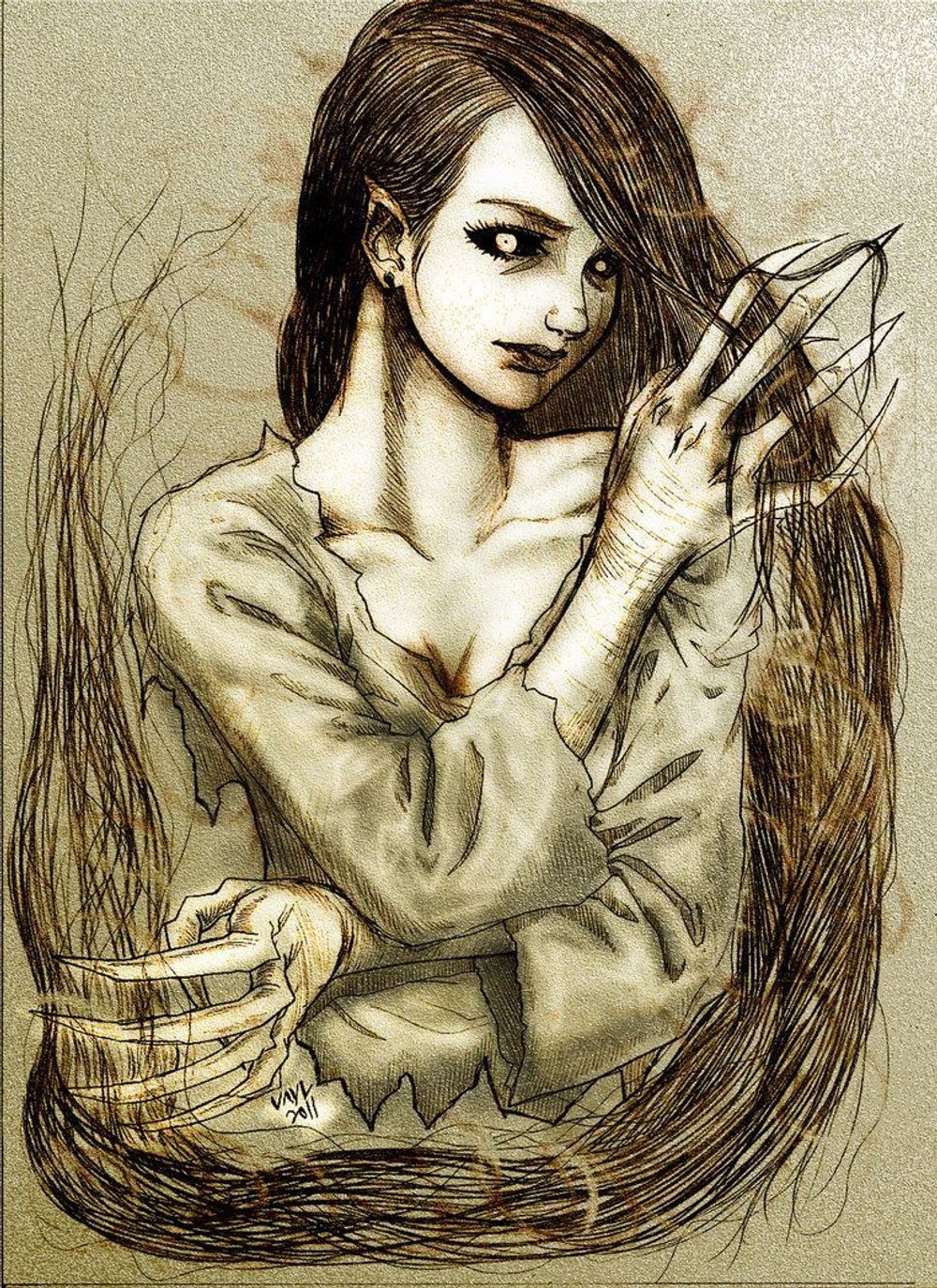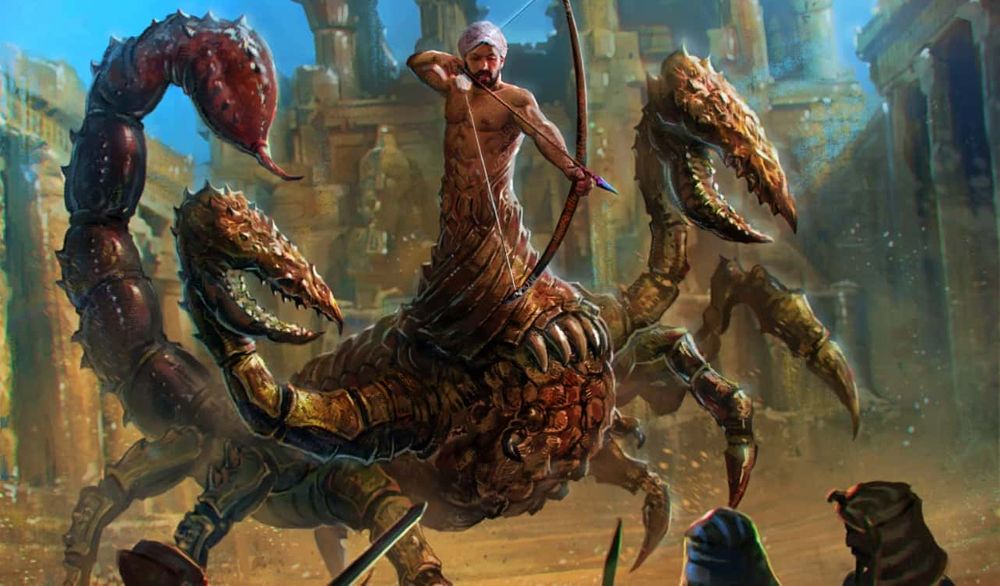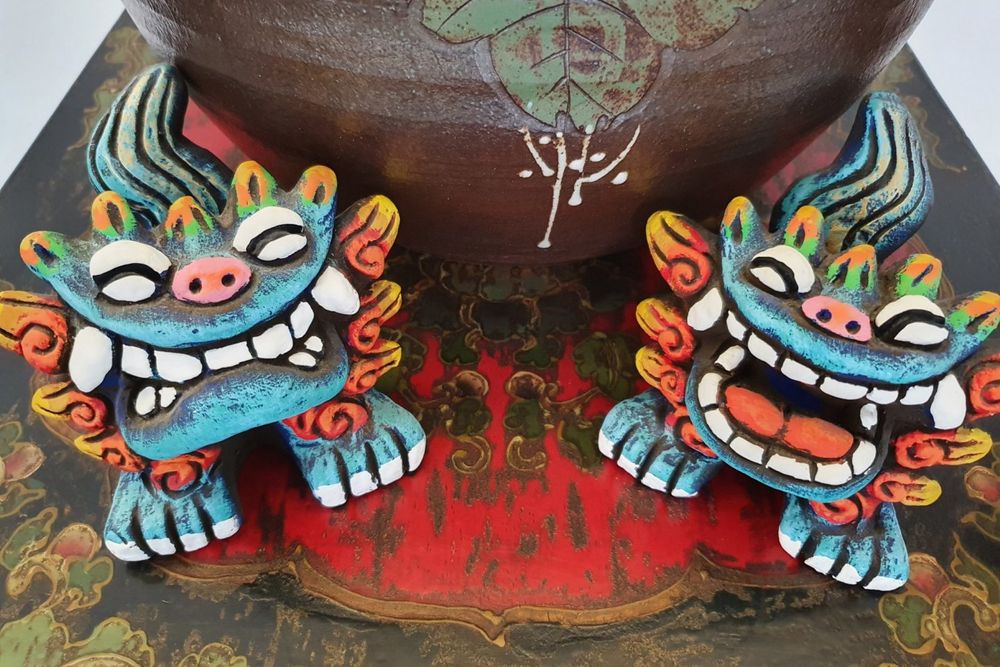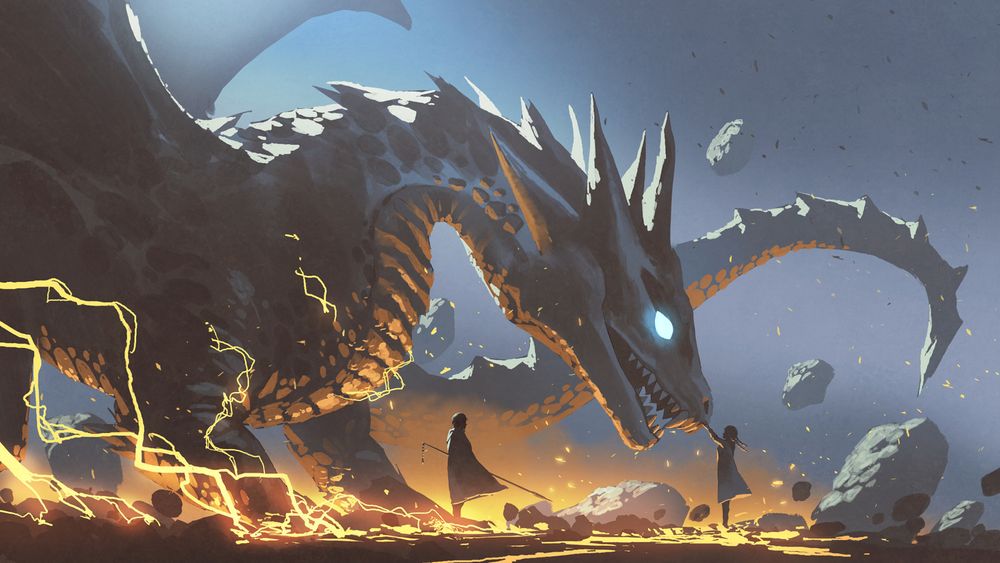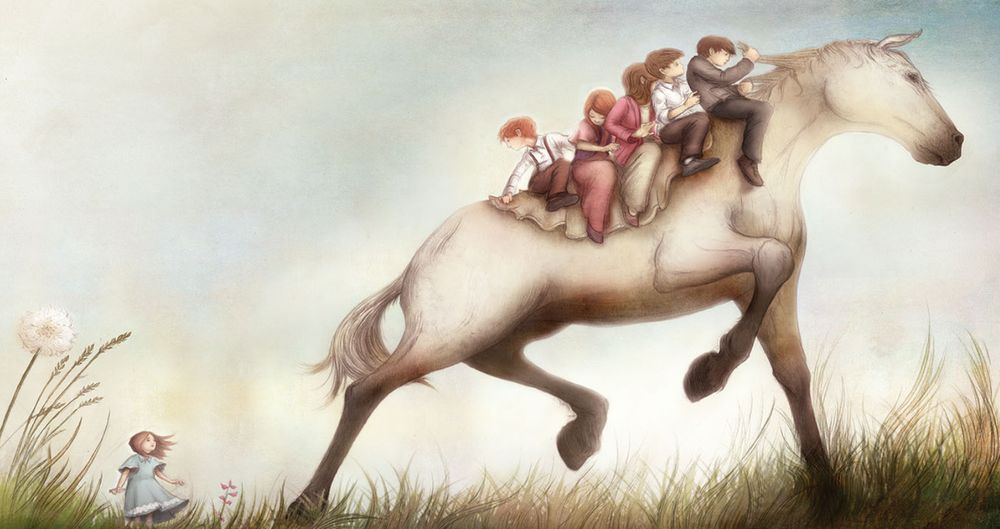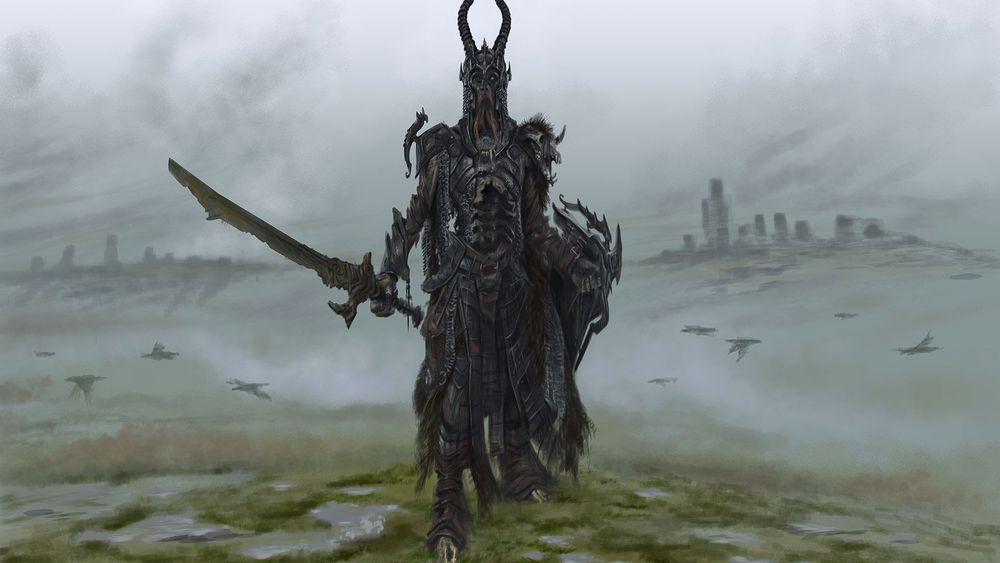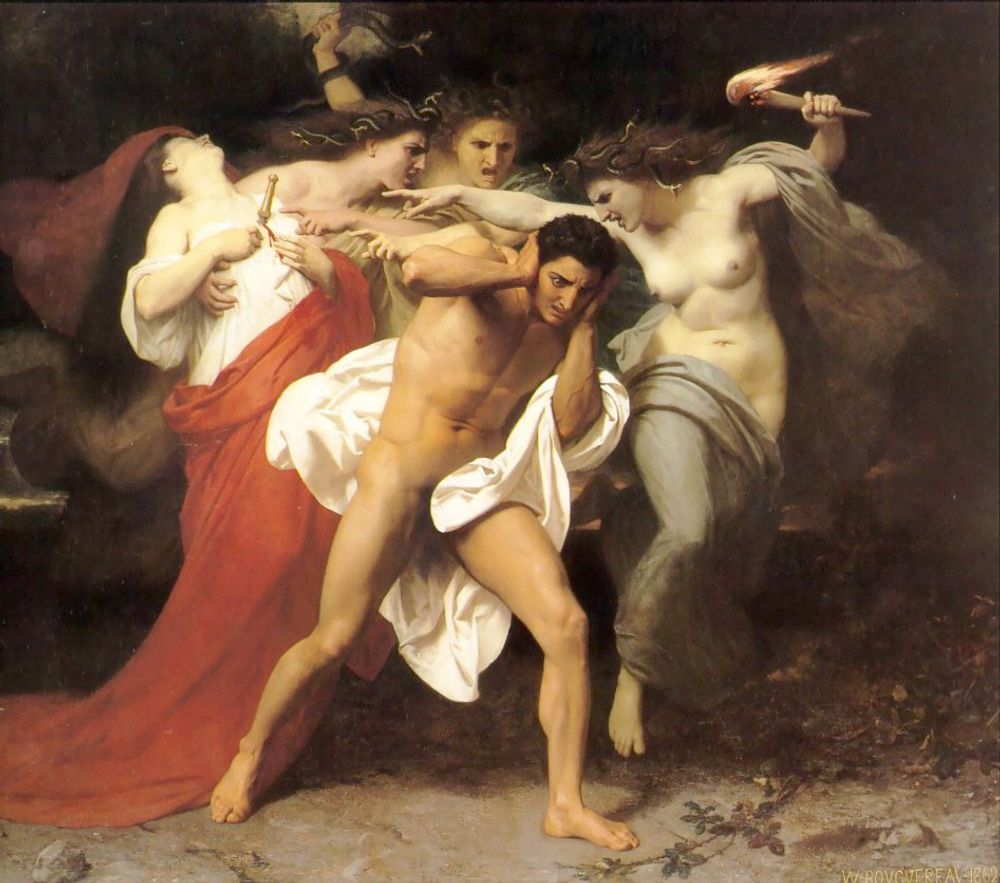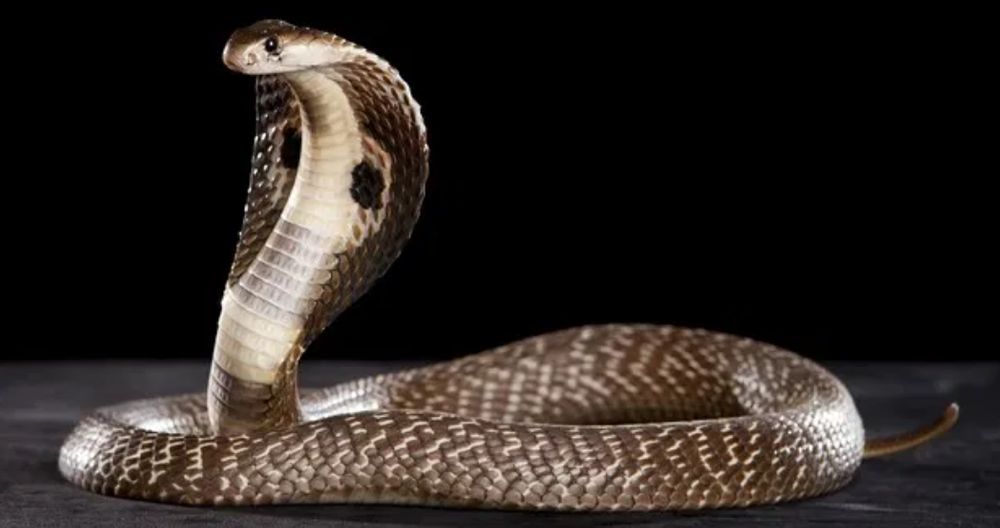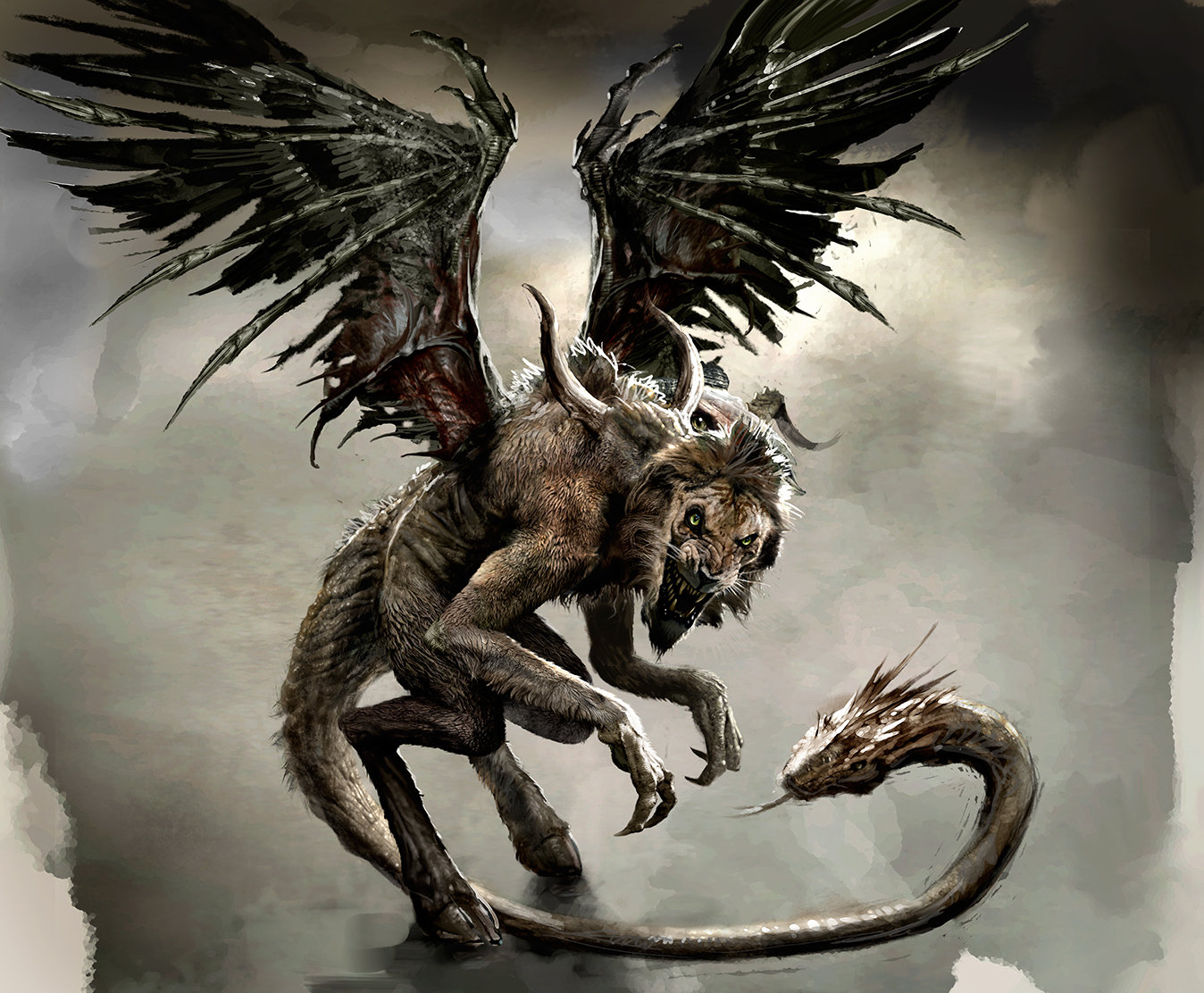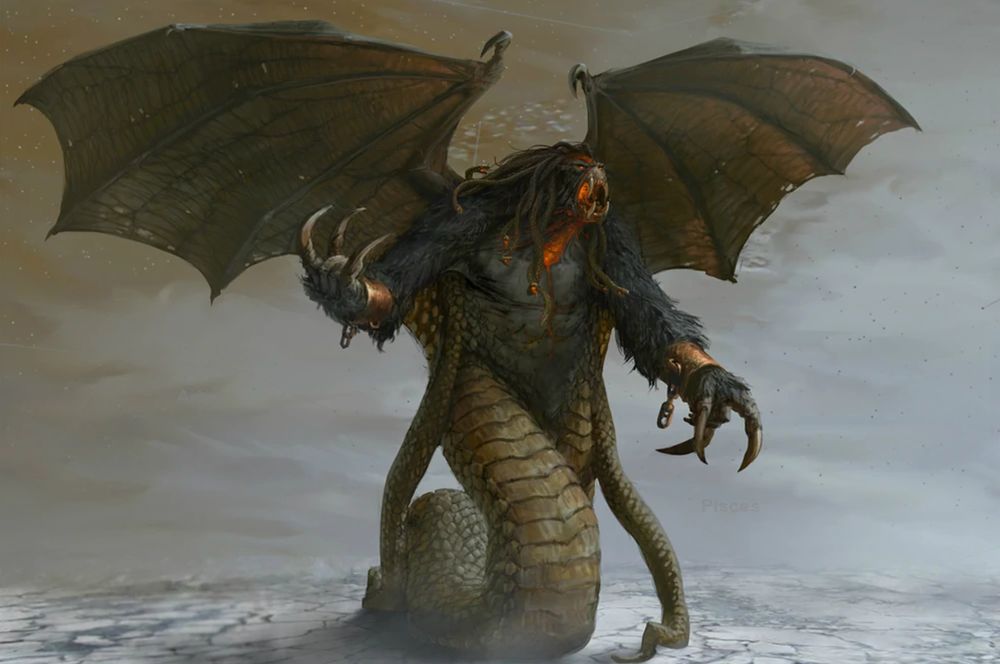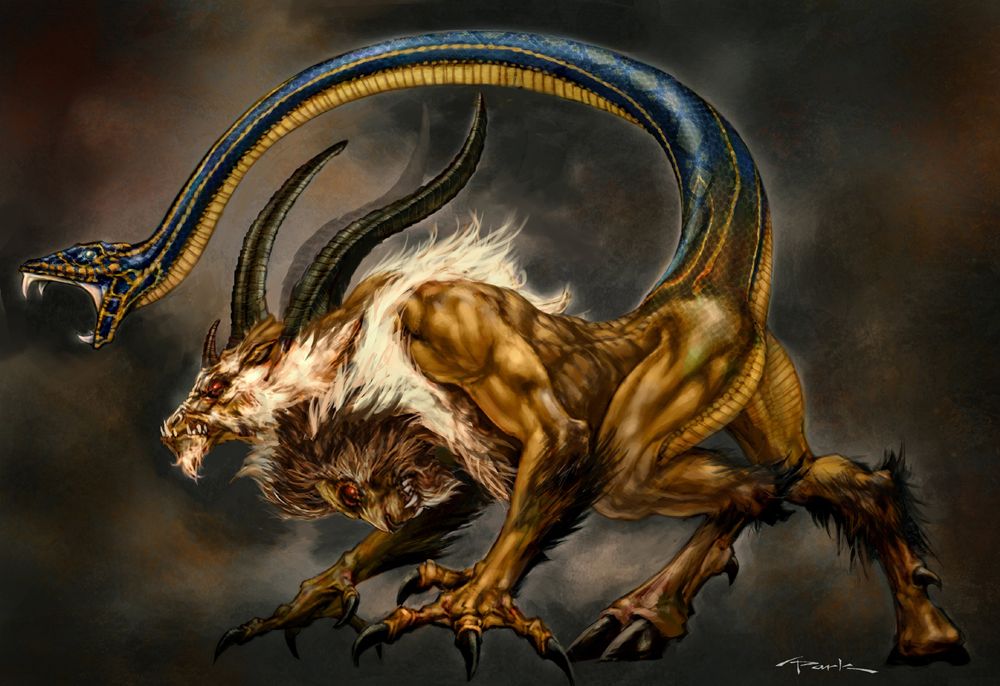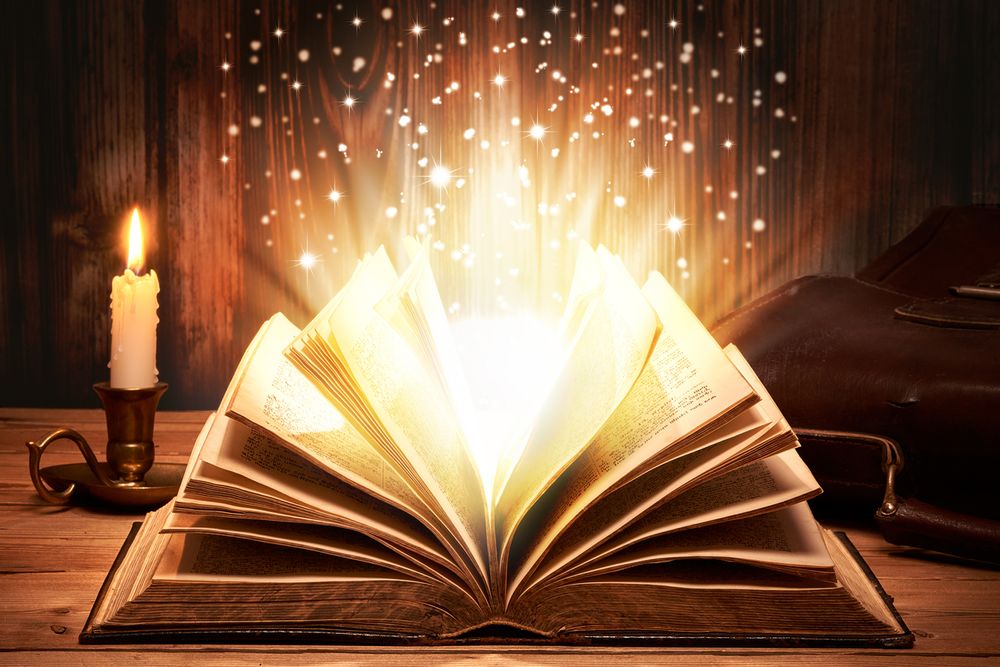It could be argued that there are more beasts and creatures of fantasy in this world than there are genuine animals. In fact, the number of mythical creatures is so vast that we can’t even begin to put a number on it. From Greek mythology to the Loch Ness monster and the creations of fantasy fiction authors, there is seemingly no end to the beasts our imaginations can conjure.
Fantastic Beasts and Where to Find Them
Mythical creatures exist in all walks of life. You don’t need to look hard to find them. However, some exist deep within the darkest recesses of a culture, and often, they are genuinely terrifying creations. In this article, we will look at a collection of both. They are the most fantastic, fascinating, and disturbing mythical creatures ever spoken of. We will travel the world and look at the best mythical beasts ever thought up. But don’t worry, you won’t be wasting your time reading more about the Loch Ness monster. While Nessie is fun, we are looking for something a little darker here. So grab your flashlight, say your prayers, and take a step off the beaten track as we hunt for mythical creatures.
5 Mythical Creatures From Greek Mythology
If there is one culture with a widely known and rich history of mythological creatures, then it is that of Ancient Greek mythology. Everybody has heard of the Greek gods, the tales of Jason and his Argonauts, and the battle with the fearsome gorgon, Medusa. However, that is just the tip of the iceberg for this fascinating culture. Let’s look now at some of the most fearsome mystical creatures from Ancient Greece.
1. Typhon
The largest, angriest, and more powerful mythical creature from this period is Typhon. A gargantuan mythological creature who even the Greek gods feared. His description is of a giant beast with a serpent’s body that hissed as it moved and large wings that whipped up a ferocious storm wherever Typhon went. Depending on descriptions, he had a human-like torso and, in some instances, up to a hundred fire-breathing dragon heads. Typhon was so mighty that Zeus needed 100 bolts of lightning to best the creature before locking it beneath Mount Etna.
2. Dracaena
Littered throughout Ancient Greece are tales of the Dracaena, or the Dragon Women. These creatures had the upper body of a seductive woman but the lower regions of dragons or other similarly terrifying serpents. The primary examples of Dracaenae are Echidna, Ceto, and Scylla. These powerful mythical creatures preyed upon men, devouring them in all manner of nasty ways.
3. Minotaur
Another classic character from Greek Mythology is the Minotaur. Monstrous creatures will be common on this list, but none have the history of the Minotaur. Created by Poseidon as an act of revenge against Minos, the King of Crete. Minos’s wife had a child with a prized white bull, which should have been sacrificed to the sea god. The child she bore was half human and half bull. Minos locked his wife’s bastard child away inside the fabled Labyrinth, where it remained trapped until Theseus came along and ended its suffering.
4. Hydra
One of the most fearsome mythical beasts from the Ancient world is the Hydra. Sea monsters are coming in early mythology, as man took to the oceans and expanded their borders. However, the Hydra remains possibly the most legendary creature of ancient mythology. A serpentine creature with multiple heads. Too many to count, especially when you factor in how two fresh ones replace each head that gets severed. Hydra is famous for being one of the twelve labors of Hercules, who managed to slay the beast and make the seas a slightly safer place.
5. Chimera
Another fabled creature from Greek mythology is the Chimera—a three-headed fire breathing beast. The Chimera is said to have the head of a lion, the body of a goat, with a head extending from the spin, and a large dragon head as a tail. While there are certainly worse creatures, something about the Chimera draws people in. According to the legend, the beast was slain by Bellerophon with the aide of his winged horse Pegasus.
Honorable Mentions
The following mythological creatures all deserve an honorable mention.
HarpiesGiantsThe GorgonsCharybdisLamia
In a world filled with dragons, giants, and all manner of evil spirits, Greece was certainly not a fun place to visit.
5 Utterly Terrifying Creatures from Roman Mythology
There are heavy bonds that tie greek and roman mythology together. The Romans had no real mythical beasts before they came across the ancient greeks. With that connection established, the Romans somewhat adopted the Greek myths and added their twist to them over time. As such, many of the names associated with Greek myth could also likely be labeled a Roman mythical creature.
6. Asp
The Asp is a snake-like creature that shares its place in several mythologies. Said to be the first snake severed from the head of Medusa herself, it carries with it enough poison to kill anything it bites. The legend of the Asp was cemented in the story of Cleopatra, who used the creature as a means to kill herself.
7. Phoenix
Another mythical creature that shares its home across several cultures, the Phoenix is a beast that needs no introduction. According to the legends, there is only ever a single phoenix alive at any one point. They live for approximately five hundred years, and then, when it is their time to pass, they burst into flames. From the ashes of its dead predecessor, the next phoenix is born.
8. Cerberus
What creature could be more fitting for a list of mythical creatures than Cerberus? The three-headed dog beast stands guard over the gates of Hades. Once again, Cerberus is a creature that is known in Ancient Greece. Cerberus is often described as having three heads and a serpentine tail with multiple snakes growing from around his body. Technically it is the brother of a few other creatures on this list, Hyrda, and Chimera. While Cerberus is called the guardian of Hades, it was not as many you think to stop people from entering, but rather to ensure none of the dead ever managed to escape.
9. Cyclops
Once more, the Cyclops is a figure borrowed from Greece and placed deep into the realms of Roman mythology. Several different types of Cyclops appear throughout various mythologies; however, the core look never changes. They are one-eyed giants and talented builders. While the cyclopes are not considered evil in nature, they have played significant parts in many stories. It is even fabled that they are the ones that created Zeus’s lightning bolt (before making the transition over to Roman myth).
10. Dirae
They say that hell hath no fury as a woman scorned, and after reading about the furies, you start to understand the origins of that statement. Dirae were Roman goddesses of vengeance. Very similar to the Furies (Erinyes) of Greek lore. They would listen to the complaints of mortals against their fellow man and then extract an often bloody vengeance on that person. The exact number varies from text to text, but the more common reference is to three sisters. The daughters of Pluto and Nyx.
5 Fabulous Beasts from Norse Mythology
When thinking about legendary creatures, you can’t ignore those that dwell within the realms of Norse mythology. While Vikings might be all the rage these days, there is so much more to the great white north than just these bearded behemoths. Let’s look at some of the supernatural creatures whose legends were forged in the snow and ice.
11. Draugar
Norse zombies. That’s pretty much the sum of it here. The Draugar are the undead, but unlike modern zombies, these mighty magical creatures had borderline supernatural abilities. They could change their size at will, growing to become giants. The stench of death and decay always followed them, alerting everybody to their presence. They lived in their graves and were said to be able to enter the dreams of those they targeted. Usually, the Draugar would attack those who had wronged them in life.
12. Fossegrimen
Known as Grim, the Fossegrimen are fascinating mythological creatures. Musical by nature, they live in wells, and should someone wish to learn how to play the fiddle, they must make a very specific offering to the Grim. If the offering was not good enough, all the Grim would teach is how to tune the instrument. The worse option was if the offering was accepted. Then the Grim would grab the musician and pull their hands over the strings until they bled.
13. Fenrir
A fearsome wolf like creature, Fenrir was set to destroy all nine worlds of Norse lore. What more could you expect from the son of Loki? Due to the destiny that lay ahead of Fenrir, he was raised by the Norse gods and trained, or so they thought. Unable to control the beast, Fenrir was tricked into being chained up for eternity. The legend goes the god Tyr, in a bid to calm the wolf, agreed to place his hand in the beast’s mouth, knowing full well he would lose it. Once chained, Fenrir bit off the god’s hand, but it was too late. He was trapped. In Norse mythology, the world will end when Fenrir finally breaks free of his bonds.
14. Mare
The Mare are nasty mythical creatures who prey upon sleeping human beings, causing them horrendous nightmares. It is said that they are demons who take the souls of the living out of their bodies. The Mare preys upon the concept of the soul wandering when a person sleeps. Often the souls of witches or rebellious youths were said to become the Mare. Unlike other creatures on this list, the Mare did nothing beyond bringing bad dreams. There is no physical malevolence related to this creature, which in turn, makes it all the more chilling.
15. Ratatoska
No, it’s not a Pokemon. Instead, Tatatoska is a squirrel who lives on the tree of life. According to Norse lore, this creature scurried up and down the tree of life, ferrying messages as and when needed. However, much like Squirrel Nutkin in Peter Rabbit, he was a somewhat rebellious creature and would often play tricks on the eagle that watched from the upper branches and the dragon that lived in the roots. Different tales carry differing motives, from the cheeky to the sinister.
Honorable Mentions
The following legendary creatures deserve mentioning, not just for their fearsomeness, but for the sheer immense creativity that goes into their legend.
ValkyriesTrollsJotnar (Norse Giants)Jormungandr – a giant snake-like creatureHuldra
There is something fascinating about the legends and mythical creatures that dwell within the pages of Norse history. They make for very entertaining reading but certainly a perilous existence.
5. Fantastic Creatures of European Folklore
Another period rich with its own mystical creatures is Europe and Irish Folklore. A great many creatures abound through the pages of history; stories passed down through the ages. Stories that are still spoken of to this day. Let’s wander now through European lands and look at what legendary beasts lay in wait.
16. Kelpie
A mythical creature from Irish folklore is the evil horse-like spirit, the Kelpie would lure children to the water’s edge, get them to climb on their back, and quickly steal them away, diving deep below the surface. There’s nothing fancy about the Kelpie. They are mean and nasty, and their roots are clearly designed to teach children to steer clear of the water until they are old enough to swim in it alone.
17. Fear Gorta
Another mythical creature from Irish mythology is the Fear Gorta. It is essentially a zombie, but with a strangely vivid twist and a good moral behind them. These living dead creatures rise from the grave, with broken bones protruding from their bodies. Their skin is a horrid shade of blue. They would stalk their prey in search of sustenance. If an offering was made and the Fear Gorta appeased, those that made the offering would be rewarded with feast and good fortune. Those who had nothing or gave nothing would receive a future lined with famine and misfortune. The moral behind the beast is that it is good to share with those that are less fortunate.
18. The Wolpertinger
A strange beast plucked from European folklore, the Wolpertinger is a hybrid beast that stalks the woodlands of Bavaria and Baden-Württemberg. This rather unusual creature is neither fearsome nor evil. It is simply a bizarre animal that is said to be a hybrid of a Rabbit, a squirrel, a deer, and a pheasant. A stranger mix of creatures you are unlikely to find. Much like the European badger differs from its American cousin, you could consider the Wolpertinger the European version of the Chimera. The only question is that should there be any real life encounters of the Wolpertinger, how would you catch it, and would it taste any good?
19. The Turul
This mythical creature is from Hungarian / Turkish origins. It is said to be a protector spirit, first seen in the dreams of a princess of the Árpád dynasty. This giant bird closely resembles a falcon and is said to watch over pregnant women, which its gaze enough to scare away any demons that try to harm the mother or her unborn child. There are strong bonds between pregnant women and bird-like protectors across the entire Steppe mythology.
20. Dragons
Dragons are known worldwide; however, it is their base in European folklore that cemented them as a fearsome fire breathing giant. These creatures are normally angry beasts who love the taste of human flesh, whether raw or charred. These mythical creatures abound in British folk tales, often used as guardians who breathe fire to keep adventurous knights away from princesses or treasure. They were also a very popular tool for human sacrifices, especially fair maidens.
Honorable Mentions
It was hard to narrow down the list of mythical creatures from European folklore to just five, so here are a few more creatures that could have easily made the list.
Tatzelwurm – technically a member of a dragon familyBlack ShuckGjengangerFear Liath
European history is full of interesting and downright terrifying mythical creatures. Many of them permeate across multiple different cultures, and a significant number still feature heavily in modern society.
5 Savage Mythical Creatures from Japanese Mythology
Japan is a country with a vibrant and densely populated mythology. Consequently, there are no shortage of devilish creatures and spirits with magical powers scattered through Japanese folklore. The following five mythical creatures are equal parts intriguing, distributing, and terrifying. So sit back, and brace yourself.
21. Shisa
Hailing from the southern Japanese island of Okinawa, Shisa are guardian spirits, often in the form of a dog-like creatures. They sit outside their master’s property and protect it from both evil spirits and bad fortune. Often seen in pairs, the male Shisa sits on guard with its mouth open and teeth bared, ready to attack approaching evil. The female spirit sits with its mouth closed as she attempts to preserve good fortune in the home.
22. Jorogumo
A genuinely terrifying creature, it could put you off dating for life. These mythical creatures are actually golden orb spiders that have lived for 400 years. On their 400th birthday, they grow in size and develop the ability to shape-shift into a beautiful woman. They use this beauty to lure men into their chamber, where their spider form will be revealed, and they devour their victims.
23. Oni
Through Japanese mythology, there are many references to different types of Oni. They are demons with a vaguely human form. Standing around nine feet tall and carry a large iron bat, which they use whenever they can. They are angry, short-tempered brutes and one of the most fearsome creatures in Japanese legend. Often depicted as having red or blue skin, they are as strong as they are repulsive. They attack evil-doers and will happily devour human beings should the chance present itself.
24. Konak Jiji
A quiet imperious little scamp, the Konak Jiji will take the form of a human infant and hide in the woodlands. When they hear people passing by, they start to wail. Those who come to investigate a lost child’s sound meet a nasty fate. Anybody that picks up the Konak Jiji will become paralyzed as the creature swells and grows heavier and heavier to its real weight of around 350kg. Victims are slowly crushed to death under the growing weight. However, not to deter people from doing good deeds, anybody who could survive the experience may be given a magical reward.
25. Kappa
The Kappa is a suitable creepy creature to close our time in Japan. They are water-dwelling turtle-monkey spirits who attack men that come too close to the water and attempt to steal the crystal of life from their victim’s anus. The best way to defeat a Kappa is to lure them onto dry land and force them to bow, spilling the water from the bowl on their head. If that bowl runs dry or breaks, the Kappa lose their strength and can even die.
Honorable Mentions
Unlike other myths where the creatures are large and fearsome, designed to drive fear deep into the hearts of the populace, Japan is slightly different. Yes, they have terrifying demons, but they also have a range of incredibly specific mythical creatures which, quite frankly, need to be read about to be believed.
Kasa-obakeMakura-GaeshiMokumokurenAkanameRokuro Kubi
These mythical creatures come in varying forms, but all have a very specific and highly unusual legend behind them. If you get a chance, you must check them out.
5 Amazing Mythical Creatures From Around the World
The world is full of myths and legends. Every country and culture has them. The following collection of fantastic beasts comes from all corners of the known world.
26. Aqrabuamelu
There is any number of half human half animal creatures through a range of mythologies. However, there is something extra unsettling about the Aqrabuamelu. Originating from Ancient Mesopotamia, this horrid creature is half human and half scorpion. A human head and upper body with a scorpion body, including the stinger tail. That is a horrifying creature.
27. Werewolf
No list of mythical creatures could be complete without mentioning the werewolf. While they have their origins in European folklore, the creatures of similar description exist through many different cultures. Cursed to be a servant of the moon, the werewolf can be described in many ways, from being a man with powerful wolf-like hind legs to a fully transformed version of the animal. It is generally considered that they cannot control their bestial urges and attack and feed at will when the moon is full.
28. Basilisk
A creature that almost defies description, with some claiming it is half snake and half-bird, the Basilisk is one of the most powerful mythical creatures ever given life. Possibly related to the Gorgons, the creature’s gaze alone is enough to kill a man. The descriptions of this creature also include it being a giant sea serpent to a winged snake that leaves a venomous trail behind it. Whatever its form, there is one consistent weakness in its armor, and that is the weasel. For some reason, the Basilisk is fearful of weasels, and it is said that their stench is even enough to kill the beast.
29. Bigfoot / Abominable Snowman
While not the same creature by any stretch, they are worthy of combination for this list due to underlying similarities and mythical legend. Both Bigfoot and the Abominable snowman carry a level of intrigue and conversational division equal to that of the Loch Ness monster. Giant ape-like creatures that live deep in the woods or high in the mountains. They are often cited as angry and aggressive creatures in books and film. However, the underlying denominator is usually them being provoked by hunters and intrepid explorers.
30. Pontianak
Rounding off our list of mythical creatures is the Pontianak, possibly the nastiest creature yet. Coming from a root in Malay and Philippine mythology, it is the spirit or life force of a woman who died during pregnancy. Evil to the core, they prey upon men and are said to emerge around the full moon, disguised as a stunning and beguiling woman. They lure their prey away and suck the organs directly from their victim’s body.
Final Thoughts on Mythical Creatures From World Mythology
There it is, a list of some of the strangest, fiercest, and most terrifying mythical creatures from around the world. From the Loch Ness monster to the Japanese Oni, we’ve met a lot of different creatures. Which held your interest the most? Which would you least like to meet in person? Are there any creatures that exist in tales from your area of the world that you think should make it onto the list? Let us know in the comments.
